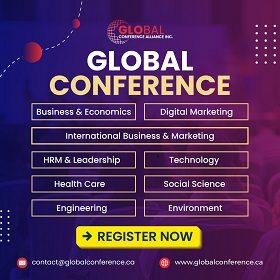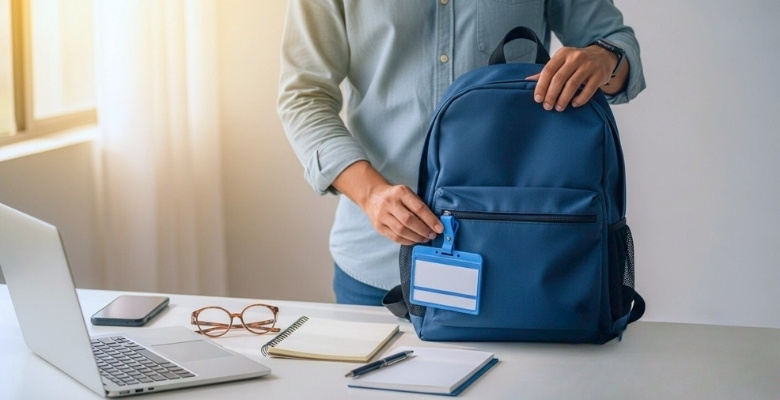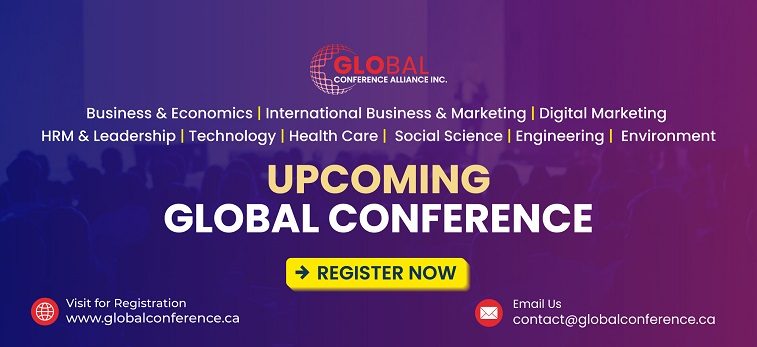Being a participant in an engineering conference allows you to explore new ideas, learn from others, and become aware of current trends in technology. The experience can be both enjoyable and inspiring. But before you go, you might be asking yourself: What should I bring to an engineering conference as a participant?
You should bring comfortable clothes, a notebook and pen, basic tech items like your phone and charger, a water bottle, snacks, business cards, a folder for papers, and a strong bag to carry everything. It’s also smart to check the weather, pack weather-friendly gear, and include anything that helps you stay comfortable and ready to meet new people during the day.
Ready to pack like a pro and maximize your trip? Keep reading for a detailed guide on exactly what you need for a successful engineering conference.
What Should I Bring to an Engineering Conference as a Participant?
Going to an engineering conference can be fun and exciting. It’s a place where people learn, meet others, and share ideas. But before going, it’s good to know what to take with you. Let’s look at what you might need.
Comfortable Clothes for the Day
Wearing the right clothes can make your whole day better. Go for something that looks nice but still feels good to wear all day. A simple shirt, clean pants, and comfy shoes work well. If the place is cold inside, a light jacket or hoodie helps. You’ll enjoy things more when you’re not feeling too hot or too cold.
Basic Tech You’ll Need
Take your phone, charger, and maybe a power bank to keep your battery full. You might use your phone for checking the time, taking notes, or looking at the event schedule. If you’re carrying a tablet or small laptop, don’t forget the charger for that too. A pair of earphones can also be useful during breaks or travel.
Cards to Share
If you have cards with your name and contact info, take a few with you. These can help you share your details with someone you talk to. You never know when someone might want to connect later. Keeping them in a small case or pouch makes them easy to grab. It’s a simple way to leave a good impression.
Notebook and Pen
A notebook is always handy, even if you use your phone for most things. It’s great for writing quick notes or sketching ideas. Sometimes, it’s just faster than typing. Bring a pen or two so you’re ready anytime. It also shows you came prepared.
Check the Weather
It’s always smart to check the weather, especially if you’re heading to big events like conferences in USA, where the climate can vary a lot — from sunny California to chilly Chicago. If it might rain, pack a small umbrella or raincoat. If it’s going to be sunny, sunglasses or a cap might help. The weather can change fast, so it’s better to be ready. Don’t let unexpected weather ruin a fun day.
Things for Your Comfort
Long days can get tiring, so small things can make a big difference. Carry a bottle of water to stay fresh and hydrated. Pack a snack like a granola bar in case you get hungry between breaks. Wet wipes or tissues can help if you need a quick clean-up. A lip balm or hand cream is good too if the air gets dry.
Bag That Holds It All
A strong and easy-to-carry bag is super helpful. A backpack or crossbody bag with a few pockets will keep your stuff in place. It should be big enough for your notebook, snacks, water, and tech. Make sure it’s not too heavy before you leave. A good bag means less stress all day.
Folder for Papers
Sometimes you’ll get handouts, papers, or brochures during the event. A small folder or file helps you keep all of it safe and flat. It’s easier than stuffing everything into your bag and crumpling it. You can also keep your entry pass and notes inside. It keeps you organized without trying too hard.
Chargers and Cables
Running out of battery is never fun. Make sure your phone charger is packed and maybe a spare cable too. If you’re visiting from a different place, check if the plug is different and carry an adapter. A small power bank can save the day when you can’t find a socket. Charge everything the night before so you start the day right.
Things to Help You Connect
Meeting new people is a big part of the fun. A small notebook to write names or numbers can be useful. If you feel shy, a smile and simple “Hi” go a long way. If someone gives you their contact, write a note about them so you remember. Even a thank-you message later can mean a lot.
What Should I Pack If I Plan to Speak or Share Ideas at the Engineering Conference?
Speaking at an engineering conference is a special moment where you get to share your thoughts and ideas with others. It’s a time to express what you’ve worked on and learned. To make the most of it, you’ll want to bring a few extra things. Here are some tips on how to feel prepared on that day.
Practice Scripts or Highlights
Having a small printed copy of your main points or key lines can help before you go on stage. Reviewing your key lines or topic highlights is one of the best ways to prepare for a presentation at an engineering conference without feeling too stressed or forgetting what to say. These can be just highlights, not full paragraphs. Reading over them one last time can make you feel more sure. You can fold the paper and keep it in your pocket or folder.
Timer or Stopwatch
It’s easy to lose track of time when you’re excited or nervous. A small timer or a simple stopwatch helps you practice staying within your time limit. You can also set reminders on your phone to know when to stop. Conferences often give each speaker only a few minutes. Ending on time shows respect and preparation.
Voice Warm-up List
Your voice matters when you’re speaking in front of a group. A small list of warm-up phrases or breathing tricks can help you sound clear. You can say a few tongue twisters or hum to relax your voice. Deep breaths help calm your nerves as well. Do this quietly before your turn to speak.
Slide Clicker or Remote
If you’re using slides, a small clicker or remote can make things easier. It helps you move through slides without needing to stand by the computer. You can stay focused on the audience and not the laptop. Some remotes also have a laser pointer, which is helpful. Make sure to test it before your talk.
Emergency Kit
Sometimes small things go wrong, so it’s smart to be ready. Pack a few safety pins, a band-aid, or even tissues just in case. If you wear glasses, bring a cloth to clean them. You might also want breath mints or lip balm. These little items can make a big difference if you need them.
Feedback Notes Page
After your talk, people might give you comments or tips. Carry a page just for writing this feedback. You might hear helpful ideas or questions to think about later. It’s a good way to keep track and learn for next time. Don’t rely on memory—write it down while it’s still fresh.
How to Pack for Unique Weather Conditions?
Packing for an engineering conference can be easy until the weather gets tricky. Sometimes it’s hot, cold, rainy, or all of that in one day. If you’re not ready, it can spoil the fun and comfort. Let’s see how to pack smart for any kind of weather.
Step 1: Check the Weather Forecast
Before you start packing, take a moment to check the weather for the place you’re visiting. This helps you know if it will be hot, cold, rainy, or all of them together. You’ll know what to focus on—like a warm jacket or a raincoat. A quick weather check can save you from packing things you don’t need.
Step 2: Go for Easy Layers
Wearing layers is the smart way to stay comfy in changing weather. Light shirts, hoodies, or a thin jacket can be added or removed as needed. This helps when it’s cold outside but warm inside. Layers don’t take up too much space in your bag. Plus, they keep you ready for anything.
Step 3: Pick the Right Shoes
Shoes matter a lot when the weather is weird. Go for shoes that are comfy for walking and can handle water if it rains. Waterproof sneakers or boots are a great choice. Don’t forget socks that dry fast. If you expect to go somewhere indoors or fancy, bring a second pair.
Step 4: Pack for the Rain
Rain can come anytime, even if the sky looks clear in the morning. A small umbrella or a foldable raincoat is perfect for that. Keep them in your bag so you’re always ready. If you’re carrying a backpack, you can also bring a waterproof cover. Staying dry keeps the day going smoothly.
Step 5: Don’t Forget Sun Protection
Even in places where it rains a lot, sunny days can pop up. A cap or hat, sunglasses, and sunscreen are small things that help a lot. You don’t want to get sunburned just walking around. These items are light and easy to carry, so they won’t take up much room.
Step 6: Choose Quick-Dry Clothes
Weather can be full of surprises, so it helps to wear clothes that dry fast. If you get caught in the rain or sweat a lot, you won’t stay wet for long. Fabrics like polyester or blends are better than heavy cotton. You can even pack an extra shirt just in case.
Packing Smart for Engineering Conferences- Why It Matters?
Getting ready for an engineering conference is more than just picking out clothes and filling your bag. The way you pack can change how your day goes at the event. If you forget something important, it could make things harder. Here’s why packing smart is so important:
Boosts Confidence and Comfort
Packing the right things helps you feel more sure of yourself throughout the day. Wearing neat clothes and carrying your notes or materials shows you’re serious about what you’re doing. You’ll worry less and focus more when you know you have what you need. Being prepared makes you look and feel confident in every situation.
Saves Time and Reduces Stress
A well-packed bag keeps you from rushing or forgetting things at the last minute. When everything has its place, you can grab what you need quickly. You’ll stay calm even when the day gets busy. Smart packing also helps you avoid extra stress during travel or before your session starts.
Helps You Handle Surprises
Weather can change, or a session might move to another room. Packing a few smart extras—like a light jacket or backup charger—keeps you ready. You won’t be stuck if something unexpected happens. Being prepared helps you stay calm when things don’t go as planned.
Shows You’re Prepared
When you come with everything you need—notes, charger, ID, or even a pen—it sends a clear message. People notice when someone is well-prepared. It shows that you care and you’re ready to take part. This can make a good impression on others around you.
Supports Better Focus
You can focus better on the sessions when you’re not distracted by missing items or discomfort. Smart packing means you can pay attention to the talks and meet new people without worrying. Everything you need is already with you. That makes the day feel easier and more fun.
Makes Moving Around Easy
A well-packed bag that’s light and organized helps you move freely. You won’t get tired or annoyed from carrying too much. Simple things like good bag choice or packing only what’s needed can really help. It also keeps your stuff neat and easy to find during the day.
Helps with Networking
Having items like your contact info or a notebook ready makes it easier to talk to people. You can share your ideas or write things down when needed. Being organized shows you’re serious, and people will respect that. It could even lead to a good conversation or contact.
Keeps You Calm and Ready
When you know you’ve packed well, you feel more relaxed. You’re not worried about forgetting something or fixing last-minute problems. That calm feeling helps you enjoy more and do better. Smart packing gives you peace of mind and a smoother day overall.
What Not to Bring to an Engineering Conference?
Packing for an engineering conference means making smart choices about what goes into your bag. Some things are useful, while others just take up space or cause trouble. Knowing what to leave behind can make your day much smoother. Keep reading to see what you really don’t need for the event.
Excessive or Unnecessary Electronics
Bringing extra gadgets like tablets, speakers, or backup devices you won’t use only adds weight. Stick to the essentials—your phone, charger, and maybe a laptop if needed. Too many electronics can clutter your bag and distract you from the event. Keeping it simple makes things easier and safer.
Too Many Clothing Options
Packing different clothes for every possible situation isn’t helpful. It takes up space and makes it harder to decide what to wear. Choose outfits that are neat, comfy, and can work for both sessions and casual moments. You’ll save time and avoid carrying things you don’t need.
Irrelevant Documents or Files
Avoid bringing big folders or printed papers you won’t use. If you’re not presenting or submitting anything, you won’t need extra documents. Keep only the papers you need for entry, notes, or important details. Using digital files is a better option and keeps your bag light.
Prohibited or Restricted Items
Make sure you’re not carrying items that are not allowed, like sharp tools, sprays, or too much liquid. These things can cause problems at the entrance or during checks. Always read the event’s rules before packing. Following simple rules saves you time and stress.
Fragile or Sentimental Valuables
Don’t bring things that are easy to lose or break, like fancy jewelry or special keepsakes. Conferences are busy, and you might forget or drop something important. It’s better to wear simple things and keep the rest at home. That way, you don’t have to worry.
Too Much Cash
Carrying a large amount of money isn’t safe or useful. Most vendors and stalls accept cards or digital payments. Just bring a small amount of snacks or travel food. Keep it in a safe place, like a front pocket or wallet you can easily reach.
Carrying vs. Wearing Your Gear at an Engineering Conference—Which Is Better?
If you’re getting ready to attend an engineering conference, you might wonder whether you should carry your items in a bag or wear them. Both ways have their ups and downs depending on what you’re bringing and how long the day is. Here’s a simple comparison to help you choose what works best for you.
| Point | Carrying Your Gear (Bag/Backpack) | Wearing Your Gear (Lanyard, Clips, Pockets) |
| Comfort | May get heavy after a few hours | Feels lighter, but limited in space |
| Storage Space | Can hold everything, including tech and snacks | Only fits small items like ID or pen |
| Hands-Free Movement | Some bags allow hands-free use (like backpacks) | Fully hands-free, no bag to worry about |
| Security of Items | Safer for valuables and gadgets | Easy to lose or drop items from pockets |
| Accessibility | Takes time to unzip and search | Faster to grab things like an ID or a notepad |
| Weight on Body | Can strain shoulders or back if too full | Very light, but not useful for many items |
| Looks and Style | Looks professional with a neat bag | Simple and clean, but not practical for everyone |
| Weather Protection | A bag can shield items from rain or dust | No protection for loose items if the weather changes |
| Ease During Travel | Great for longer days or switching rooms | Better for short visits or when standing most of the time |
| Best Use | Ideal if carrying tech, snacks, or folders | Ideal if carrying just ID, phone, and pen |
Tips for Using Props or Prototypes During Your Session at an Engineering Conference
Bringing props or prototypes to an engineering conference can make your session more fun and interesting. They help others see what you mean instead of just hearing it. But to use them well, a little planning is needed. Let’s go over some tips that can help you do it right.
Keep It Simple
Choose a prop that explains your idea without making it too complicated. A small model or a basic design works better than something with too many parts. People should be able to understand what it is within a few seconds. A confusing or tricky prop can take the attention away from what you’re saying. Use your words and the prop together, so they both support each other. Simple props help the audience focus on your main point.
Make It Easy to Carry
Try to bring something that fits easily in your backpack or hands. A big or heavy item can be hard to carry and might break while moving around. Look for a small, lightweight version of your model. You’ll feel more relaxed when you don’t have to worry about your prop getting damaged. You can also use a soft cloth or bubble wrap to keep it safe. This way, you’re ready to move around without trouble.
Test Before the Event
It’s a smart idea to try your prop at home before the event. Check that it works the way you want it to. You can practice holding it, showing it, and putting it back without any problems. This helps you feel more sure and ready on the actual day. Testing early also helps fix small issues that you may not have noticed before. It’s better to spot problems at home than in front of a crowd.
Use at the Right Time
Start by talking about your idea before showing the prop. When the audience understands what you’re saying, then bring out your model or tool. This keeps everyone focused and helps them follow your talk. Try not to show it too soon, or people might stop listening. Use your prop to support your words, not take over your whole talk. It should help make your point clearer, not distract from it.
Keep It Safe
Some props can be easy to break, especially during travel. Use a box, soft cloth, or small bag to protect your prop on the way to the event. Keep all the small parts together so you don’t lose them. Write a note or label if the parts need to be shown in a certain order. Think about where you’ll keep the prop when you’re not using it. Taking care of your prop means it’ll be ready when you need it.
Practice Your Timing
Using a prop smoothly takes practice. You should know when to show it, how to explain it, and when to put it away. Practice your talk a few times with the prop, just like you will at the conference. This helps you avoid long pauses or awkward moments. Using props at the right moment is a great way to make an engineering conference presentation interactive, as it keeps people engaged and interested in what you’re showing. Good timing makes your session look planned and professional.
Prepare a Backup Plan
Sometimes, things don’t go as planned. Your prop could get lost, break, or not work properly. In that case, a photo or printed diagram can still help explain your idea. You can also show a short video or a drawing. Having a backup makes sure your talk can still go well. It shows that you’re prepared and can handle any small problems.
Frequently Asked Questions
When getting ready for an engineering conference, you might still have a few things on your mind. From small details to common doubts, these FAQs cover helpful tips and answers to questions you may not have thought of yet. Let’s clear up everything before you pack.
What Type of Snacks Are Best for Engineering Conferences?
Choose light, non-messy snacks like granola bars, dry fruits, or crackers. Avoid anything that melts, crumbles, or smells strongly. These snacks keep you energized between sessions and don’t leave a mess in your bag or hands, which is perfect for busy days.
Which Type of Bag Is Best for a One-Day Engineering Conference?
A small to medium backpack or a crossbody bag is usually the best choice. Look for one with multiple pockets and a padded strap. It should be light, easy to carry, and big enough for your essentials without making you tired from carrying it.
Is a Small Notebook Better Than a Big One?
A small notebook is easier to carry and fits well in most bags. It’s great for jotting down quick notes, names, or reminders. Unless you plan to write full pages of detailed notes, a compact notebook is usually enough for a conference setting.
What Is the Best Way to Carry Business Cards?
Use a small cardholder or pouch to keep them flat and clean. Don’t toss them loose in your bag where they can bend. A neat cardholder makes it easy to hand out cards when meeting new people and shows that you’re well-prepared.
How Much Paper Should I Carry?
Only bring what’s necessary—like a few blank sheets or a small notepad. Most notes can be written digitally or in a compact notebook. Too much paper takes up space and gets crumpled easily. A small folder or clipboard helps keep things tidy.
What Are Some Useful Items People Often Forget?
People often forget tissues, pens, hand sanitizer, pain relievers, and breath mints. These small items don’t take much space but can be very helpful during a long day. Add them to a side pocket so you can reach them quickly when needed.
How Do I Make My Bag Lightweight but Complete?
Choose multi-use items, like a jacket that fits into a pouch or a notebook with built-in folders. Don’t pack duplicates—just one of each essential. Go through your bag the night before and remove anything extra. That way, you stay light but ready.
Which Items Should Be Packed in a Separate Pouch?
Things like snacks, toiletries, tech accessories, and personal care items should go in their own pouches. This keeps your main space clear and stops things from getting lost. Label your pouches if you need to find things quickly during busy moments.
Final Thoughts
Packing for a big event like an engineering conference might seem simple, but it’s the little things that make a huge difference. From comfortable clothes to handy gadgets and a positive attitude, each item in your bag helps you feel ready, confident, and relaxed. Whether you’re meeting new people, taking notes, or speaking on stage, being prepared lets you enjoy every moment.
If you still wonder what should I bring to an engineering conference as a participant, just remember that the best choices are the ones that help you stay comfortable and make new connections. It’s about more than just packing stuff—it’s about making your whole day smoother and more enjoyable.
So go ahead, pack smart, and make the most of your conference experience. After you feel at ease and focused, your day will go smoothly.









